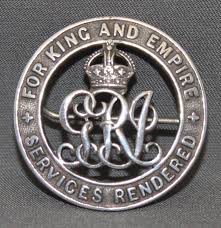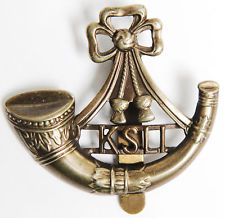Personal Details
Born: 15 September 1890
Family: Robert Henry was the second of seven children born to Annie Clarke. George was possibly the only legitimate child of Annie and Robert Clarke. In 1919 he married Annie Bleasedale (nee Moores), a young widow, in Chorlton, Lancashire. Together they had a son Robert Henry in 1920.
Residence: At six months of age it would appear that Robert and his mother were living at 38 Yardington Street, Whitchurch with Ellis Speed listed as head of household. In 1901 Annie, Ellis and six children, including Robert, were residing in Wrexham Road, Whitchurch. Ten years later the family’s address was still Wrexham Road. In 1939 the family were living at 10 Rydal Avenue, Whitchurch, Shropshire.
Employment: By 1911 Robert was working as a cowman. In 1939 he was working as a car park attendant.
Died: In 1973 aged 83 in Shrewsbury
Military Details
Regiment: King’s Shropshire Light Infantry
Rank: Private
Service Number: 225540
Date of Enlistment: 19 October 1914
Date of Discharge: 10 October 1919
Reason for Discharge: No longer physically fit for war service
Other Information: Left leg amputated as a result of gunshot wound to the thigh. Half-brother of George Clarke who served in the Royal Field Artillery.
The husband of Robert H Clarke’s grand-daughter provided the following information. He lost a leg in WW1 and while he was recovering in hospital met a nurse Anne Bleasdale (nee Moores) whose husband Samuel Mason Bleasdale died also WW1 in 1916.
James was awarded the Campaign Medals (British War Medal, and Victory Medal) and the Silver War Badge.

The British War Medal (also known as 'Squeak') was a silver or bronze medal awarded to officers and men of the British and Imperial Forces who either entered a theatre of war or entered service overseas between 5th August 1914 and 11th November 1918 inclusive. This was later extended to services in Russia, Siberia and some other areas in 1919 and 1920. Approximately 6.5 million British War Medals were issued. Approximately 6.4 million of these were the silver versions of this medal. Around 110,000 of a bronze version were issued mainly to Chinese, Maltese and Indian Labour Corps. The front (obv or obverse) of the medal depicts the head of George V. The recipient's service number, rank, name and unit was impressed on the rim.
The Allied Victory Medal (also known as 'Wilfred') was issued by each of the allies. It was decided that each of the allies should each issue their own bronze victory medal with a similar design, similar equivalent wording and identical ribbon. The British medal was designed by W. McMillan. The front depicts a winged classical figure representing victory. Approximately 5.7 million victory medals were issued. Interestingly, eligibility for this medal was more restrictive and not everyone who received the British War Medal ('Squeak') also received the Victory Medal ('Wilfred'). However, in general, all recipients of 'Wilfred' also received 'Squeak' and all recipients of The 1914 Star or The 1914/1915 Star (also known as 'Pip') also received both 'Squeak' and 'Wilfred'. The recipient's service number, rank, name and unit was impressed on the rim.

The Silver War Badge was issued in the United Kingdom and the British Empire to service personnel who had been honourably discharged due to wounds or sickness from military service in World War I. The badge, sometimes known as the "Discharge Badge", the "Wound Badge" or "Services Rendered Badge", was first issued in September 1916, along with an official certificate of entitlement.

